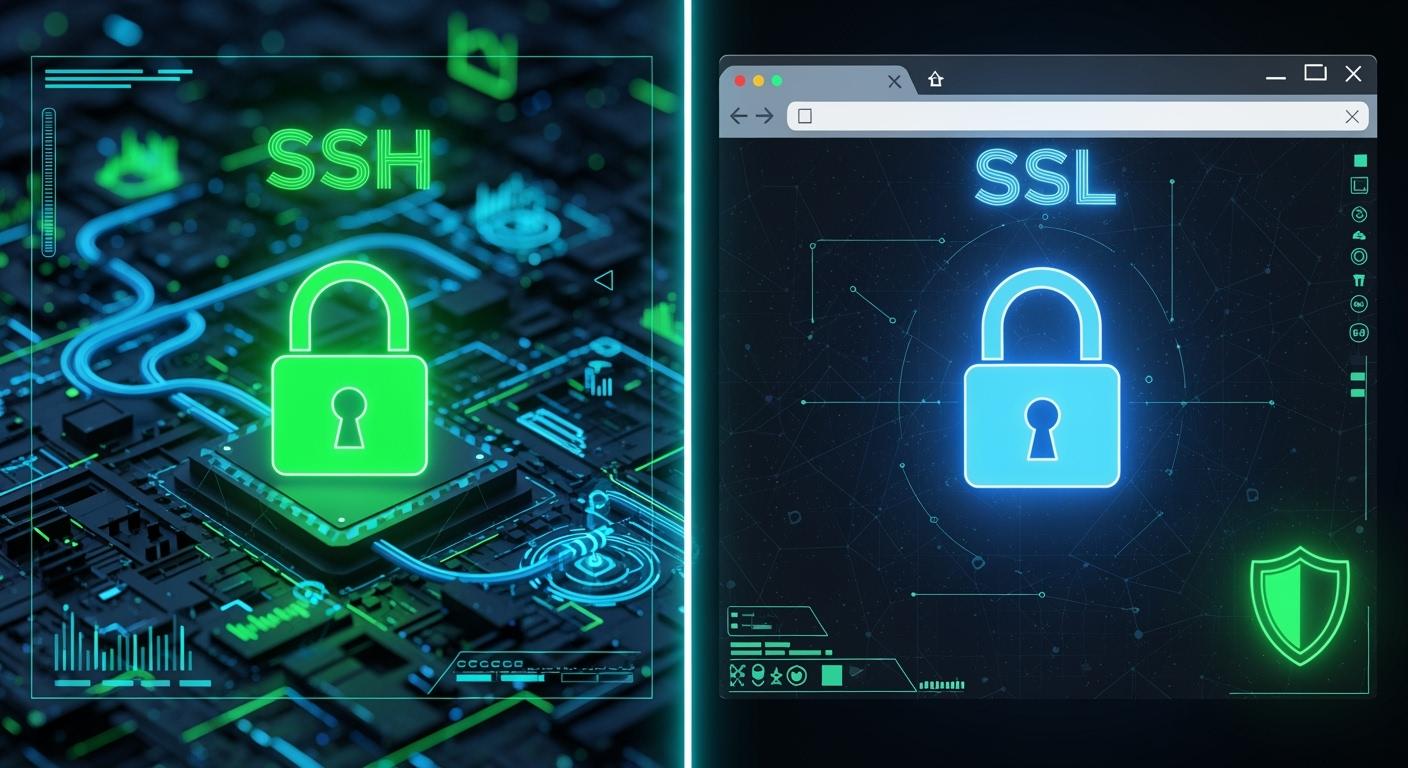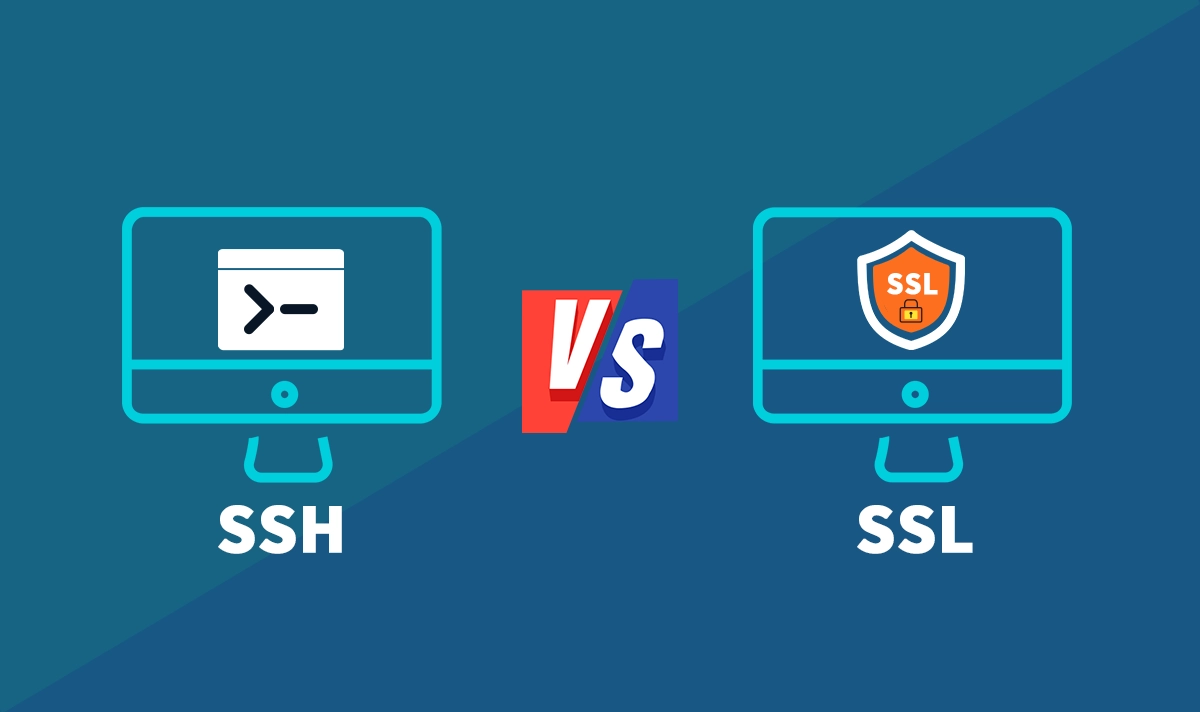
In today's interconnected digital landscape, securing data in transit is not just an option—it's a necessity. Whether you're remotely managing a server or making an online purchase, two cryptographic protocols often come into play: SSH and SSL. While both are pillars of modern cybersecurity, they serve distinct purposes and operate in different layers of the network stack.
Understanding the difference between SSH and SSL protocols is crucial for IT professionals, developers, and anyone responsible for maintaining robust network security. This comprehensive guide will break down what SSH and SSL are, highlight their key differences with a detailed comparison table, and even explore how underlying hardware, like high-performance optical transceivers, plays a vital role in ensuring these secure connections remain fast and reliable. By the end of this article, you'll know exactly when to use SSH vs SSL and how to choose the right components for your infrastructure.
🛡️ Key Takeaways
SSH lets you safely use and control another computer from far away. You can use it to manage servers. You can also use it to run commands.
SSL keeps your web actions safe by making sure your browser talks safely to websites. If you see 'https://', the site is secure.
Both SSH and SSL use codes to hide your data as it moves. They also check who you are talking to, so you connect to the right place.
Use SSH if you need to get into another computer or move files. Use SSL when you shop online or log into websites to keep your info safe.
Always pick safe tools like SSH and SSL to stop hackers and keep your private stuff safe online.
🛡️ What is SSH (Secure Shell)?
SSH, or Secure Shell, is a network protocol that provides a secure channel for operating network services over an unsecured network. Its primary use case is for secure remote login and command-line execution on servers and network devices. Think of it as a heavily fortified tunnel that allows an administrator to access and control a machine from anywhere in the world, safe from prying eyes.
How Does SSH Work?
SSH uses a client-server model. The SSH client initiates a connection to the SSH server. The protocol employs a combination of symmetric encryption, asymmetric encryption, and hashing to ensure all communication is confidential and tamper-proof. A typical SSH session involves:
TCP Handshake: The client connects to the server on port 22.
Key Exchange: The server and client agree on encryption algorithms and exchange public keys to establish a secure session.
Authentication: The client authenticates itself, often using a password or, more securely, a key pair.
Command Execution: Once authenticated, the client can execute commands on the remote server as if they were sitting right in front of it.
SSH is the go-to protocol for secure remote server management and is indispensable in DevOps and system administration workflows.
🛡️ What is SSL/TLS (Secure Sockets Layer)?
SSL and its modern, more secure successor, TLS (Transport Layer Security), are cryptographic protocols designed to provide communication security over a computer network. You encounter SSL/TLS daily—whenever you see "HTTPS" and a padlock icon in your browser's address bar, you're using TLS.
How Does SSL/TLS Work?
The core purpose of SSL/TLS is to secure the connection between two systems, most commonly a web server and a client (like your browser). This process, known as the "TLS handshake," is fundamental to web security and data encryption:
Client Hello: The client sends a request to the server, listing supported cipher suites.
Server Hello & Certificate: The server responds with its chosen cipher suite and its SSL certificate, which contains its public key.
Authentication: The client verifies the server's certificate with a trusted Certificate Authority (CA).
Key Exchange: The client and server generate session keys for symmetric encryption.
Secure Data Transfer: All data exchanged thereafter is encrypted.
This protocol is essential for securing websites, APIs, and any service where data privacy between a client and server is paramount.
🛡️ SSH vs SSL: A Head-to-Head Comparison

While both protocols encrypt data, they are designed for different tasks. Choosing the wrong one can lead to security gaps or operational inefficiencies. Let's clarify the key differences between SSH and TLS with a detailed table.
Feature | SSH (Secure Shell) | SSL/TLS (Secure Sockets Layer) |
|---|---|---|
Primary Purpose | Secure remote command-line access and management. | Securing web traffic and client-server communications. |
Default Port | Port 22 | Port 443 (for HTTPS) |
Protocol Layer | Operates at the Application Layer. | Operates between the Transport and Application Layers. |
Authentication | Primarily uses key-pairs for strong authentication. | Relies on digital certificates issued by Certificate Authorities (CAs). |
Typical Use Case | System administration, file transfers (SCP/SFTP), tunneling. | E-commerce websites, webmail, any HTTPS website. |
Connection Model | Point-to-point (one client to one server). | One-to-many (one server to many clients). |
Underlying Security | Encrypts the entire session, including authentication. | Encrypts the data payload of the communication. |
When to Use Which?
Use SSH when you need direct, secure access to a remote machine's shell for administration, automation, or secure file transfers.
Use SSL/TLS when you need to protect the confidentiality and integrity of data exchanged between a user's client (like a browser) and a web service.
Understanding this SSH SSL difference is the first step. The next is ensuring your entire network infrastructure, down to the physical hardware, can support these secure connections without bottlenecks.
🛡️ The Role of Optical Modules in Secure Network Infrastructure
You might wonder what physical hardware has to do with software-based security protocols like SSH and SSL. The answer is: everything. Security protocols create a secure logical path for data, but that data must travel over a physical network infrastructure. This is where the performance and reliability of your hardware become critical.
Optical transceiver modules are the unsung heroes of modern data centers and high-speed networks. These small devices convert electrical signals from network switches and servers into light pulses that travel over fiber optic cables. They are fundamental for high-bandwidth, long-distance connections.
How Do Optical Modules Relate to SSH and SSL?
When you establish an SSH session to a data center server or load an SSL-secured website, the encrypted data packets often traverse multiple network hops. If the optical modules transmitting this data are low-quality or incompatible, you risk:
Latency and Jitter: Delays and inconsistencies that can disrupt a smooth SSH session or slow down SSL/TLS handshakes.
Data Integrity Errors: Packet loss or corruption that can force re-transmissions, undermining the efficiency of your secure channels.
Security Vulnerabilities: Faulty hardware can lead to unexpected downtime, creating potential windows of vulnerability.
For optimal performance of secure network protocols, you need optical modules that guarantee high data fidelity, low latency, and full compatibility with your networking equipment. This is where choosing a trusted supplier makes all the difference.
For instance, the LINK-PP SFP28-25G-LR optical module is an excellent choice for demanding environments. This 25G SFP28 transceiver supports long-reach transmissions up to 10km, making it ideal for connecting secure services across different data center locations. Its high reliability and strict quality control ensure that your encrypted SSH tunnels and SSL-secured applications run on a robust and high-performance physical layer, minimizing latency and maximizing uptime. Integrating reliable components like the LINK-PP SFP28-25G-LR is a best practice for anyone serious about building a secure and high-speed network foundation.
🛡️ Conclusion: Building a Cohesive Security Strategy
SSH and SSL/TLS are not competing technologies but complementary ones, each excelling in its own domain. SSH is your tool for secure, remote command and control, while SSL/TLS is the guardian of in-transit data for web-based services. A deep understanding of both is essential for implementing effective network security protocols.
Remember, a strong security posture is a multi-layered endeavor. It runs from the application layer protocols like SSH and SSL down to the physical hardware that carries the bits and bytes. Ensuring every layer is optimized—from the cryptographic handshake to the light pulse in a fiber optic cable—is the hallmark of a well-designed system.
🛡️ FAQ
What is the main difference between SSH and SSL?
You use SSH for secure remote access and command execution. You use SSL to protect web-based communication. Both use encryption, but each serves a different purpose.
Can you use SSH and SSL together?
You can use both protocols in your workflow. For example, you might use SSH to manage a server and SSL to secure your website’s visitors.
Which protocol should you choose for file transfers?
You should choose SSH with SFTP for secure file transfers. SSL does not support remote file management like SSH does.
How do you know if a website uses SSL?
You see "https://" in the address bar and a padlock icon. These signs show that SSL protects your connection.
Do SSH and SSL use the same port?
No. SSH uses port 22 for remote access. SSL uses port 443 for secure web traffic.




